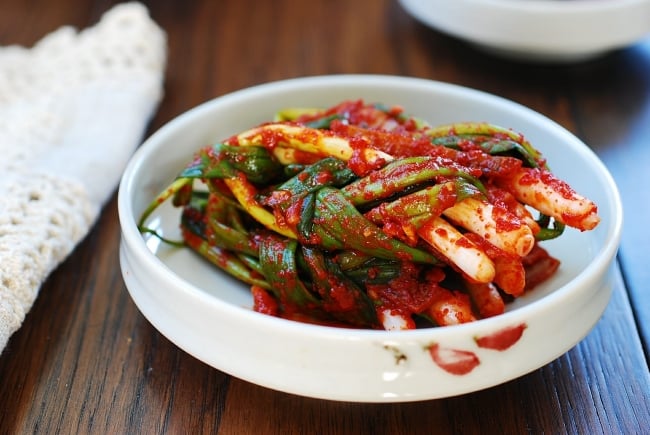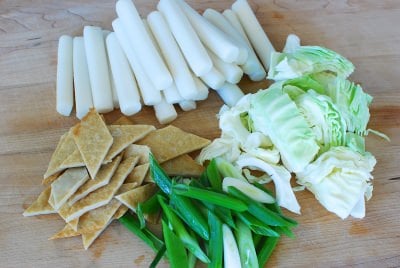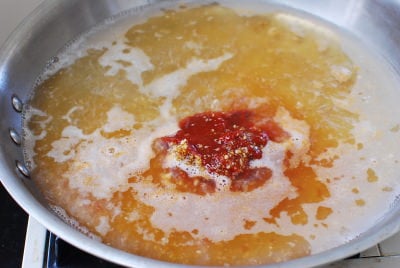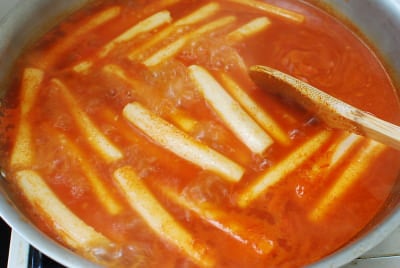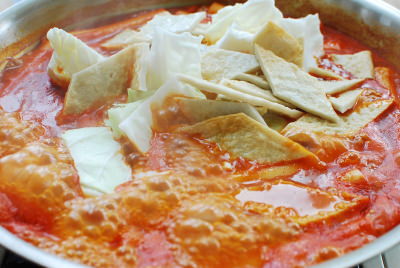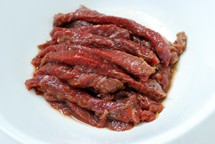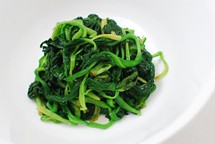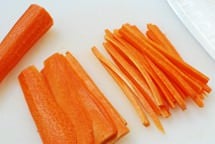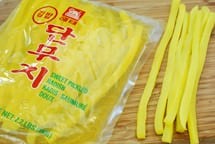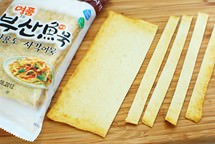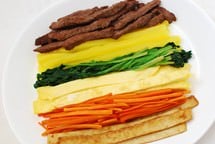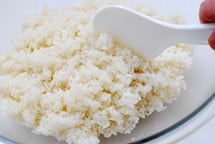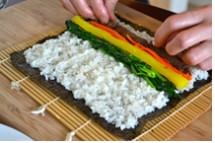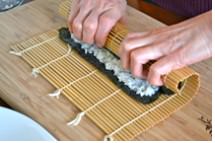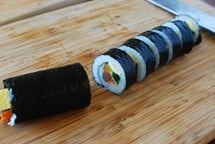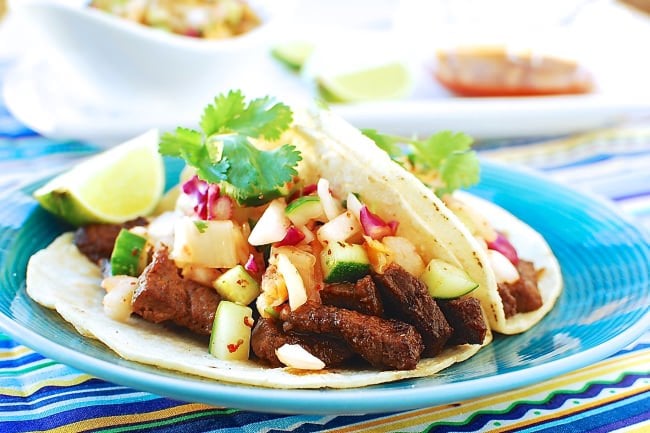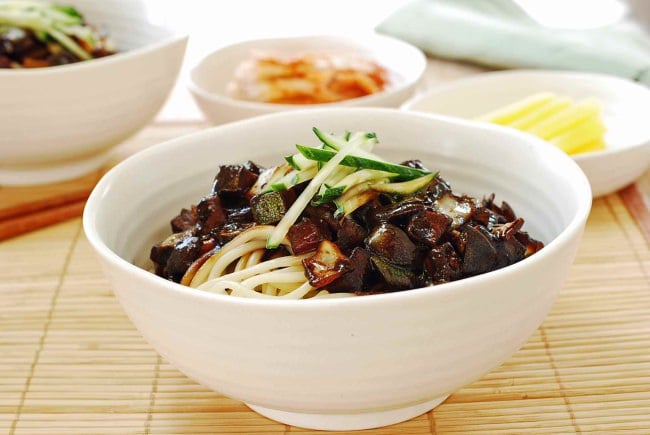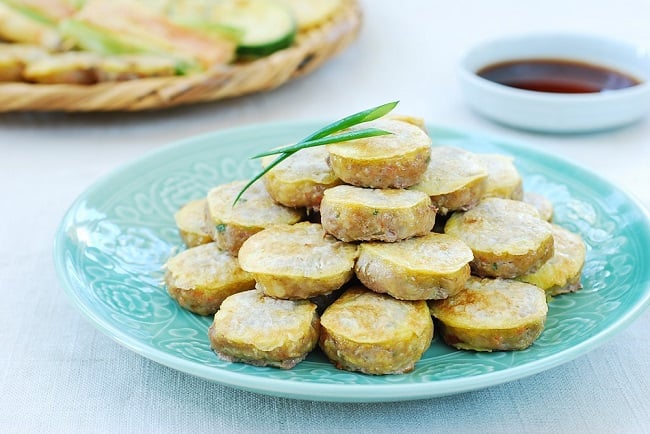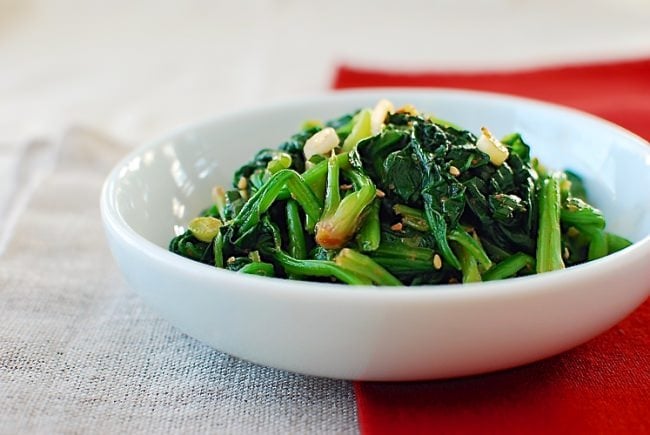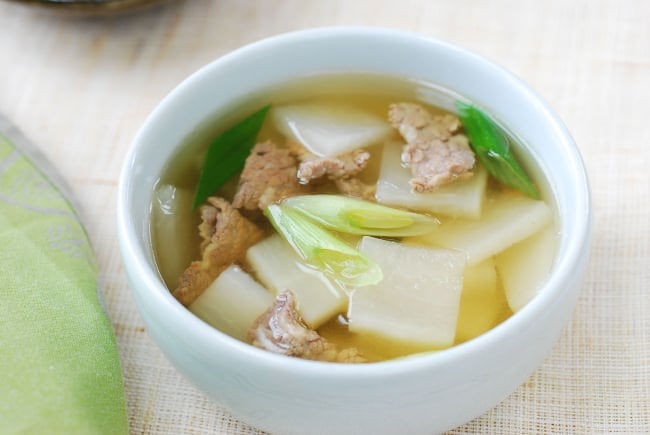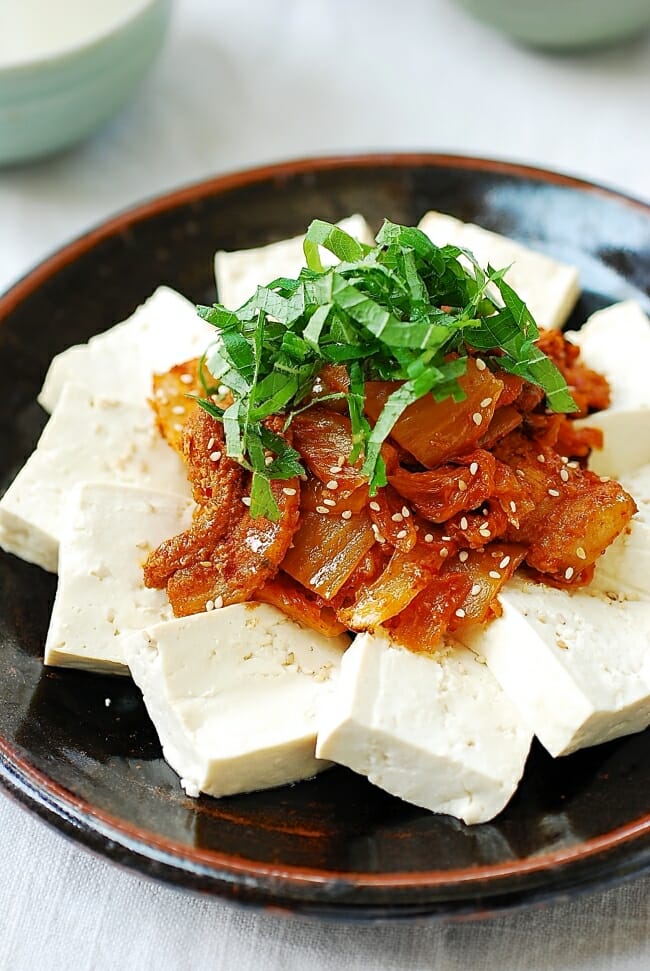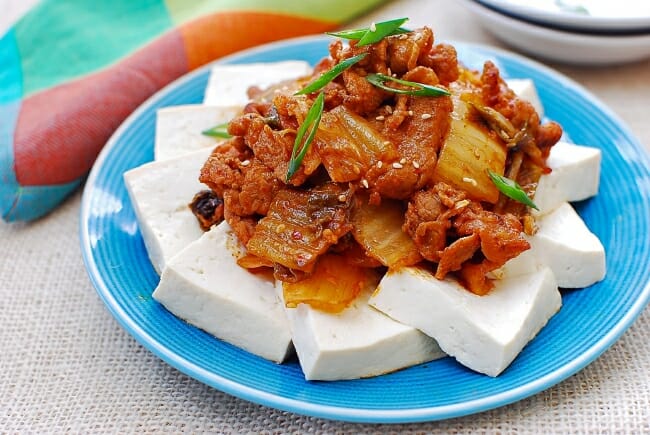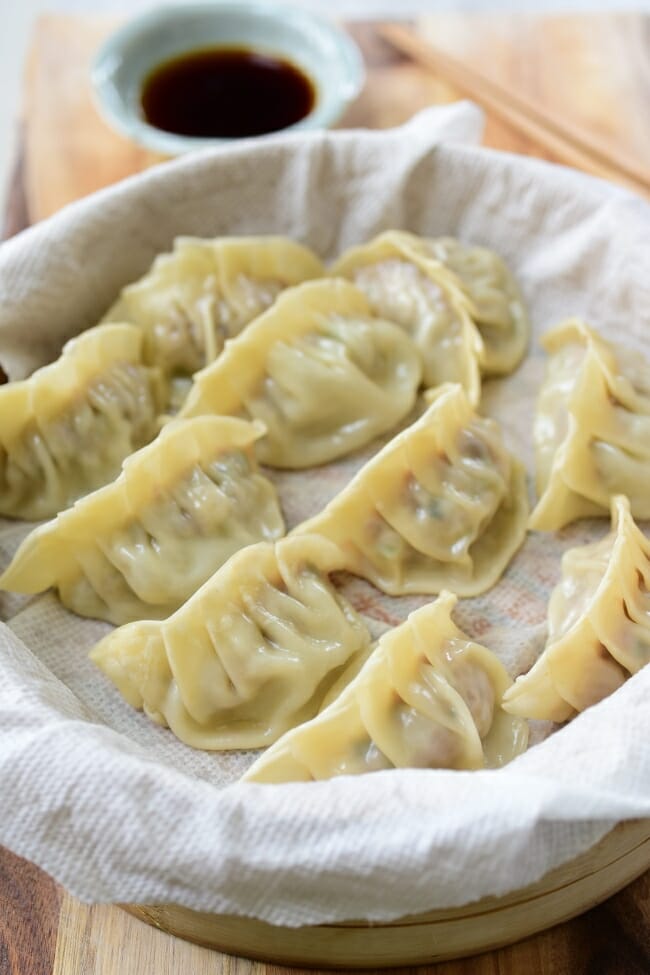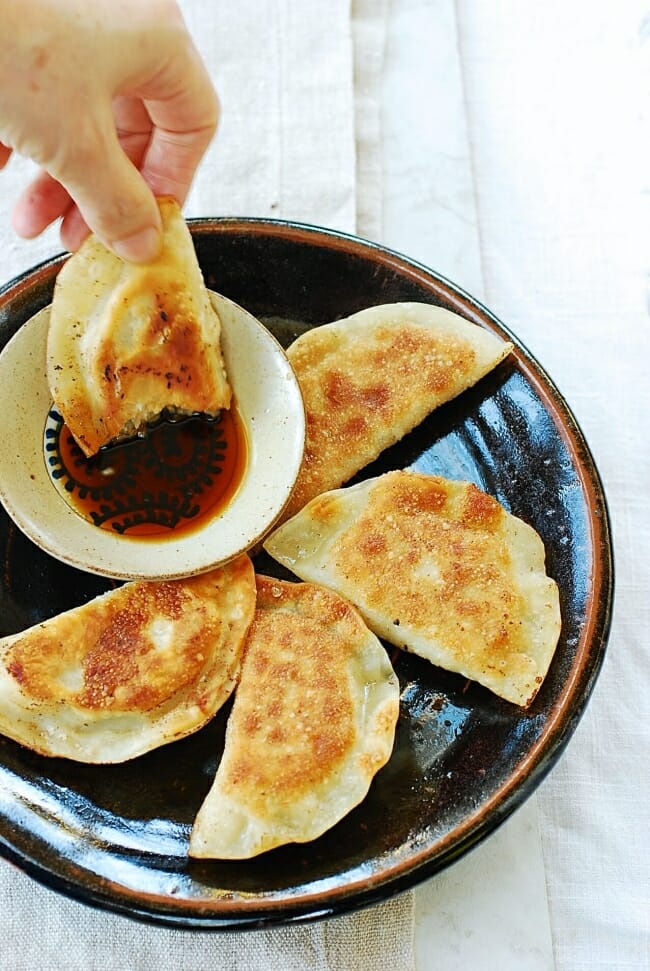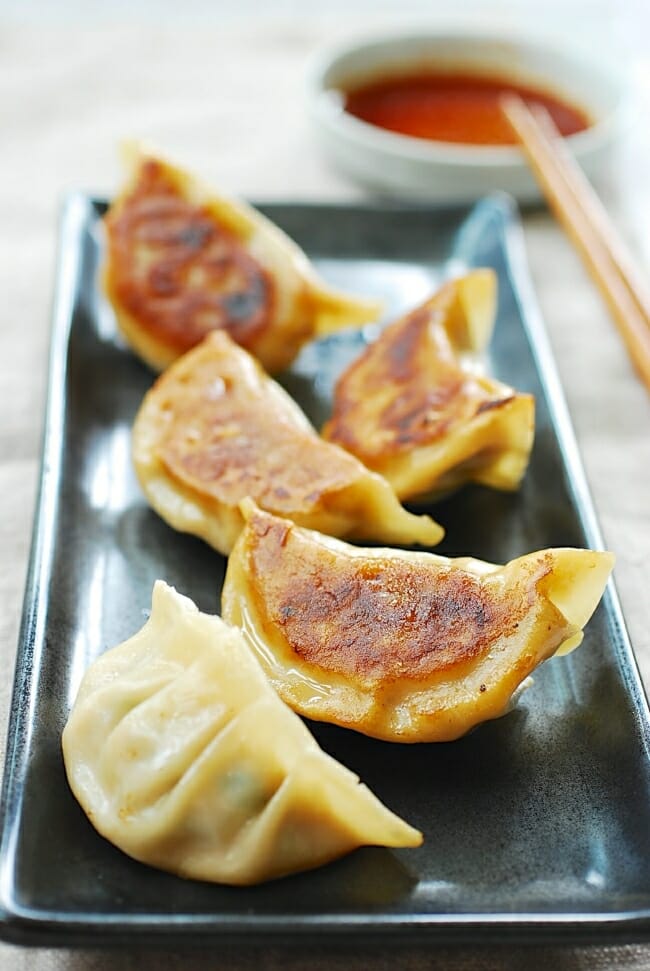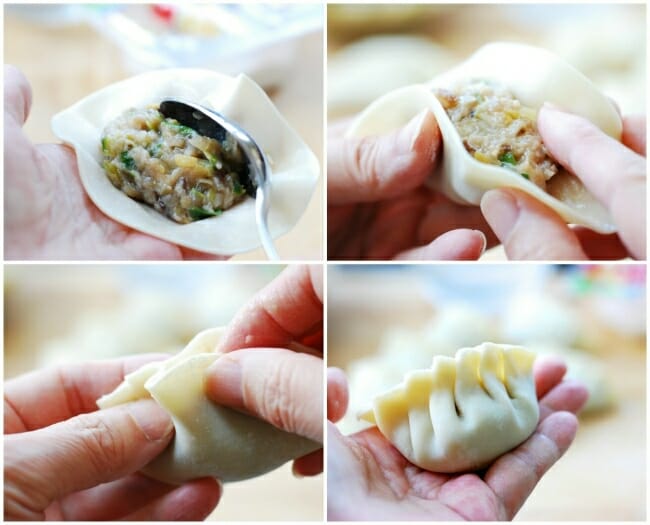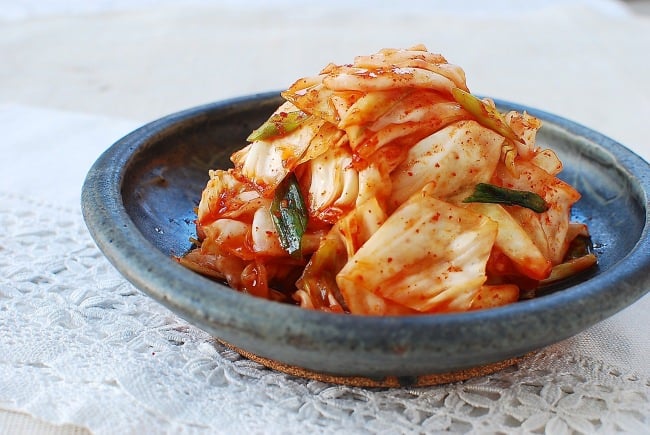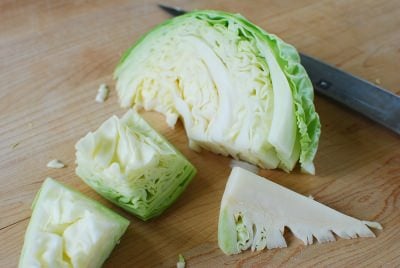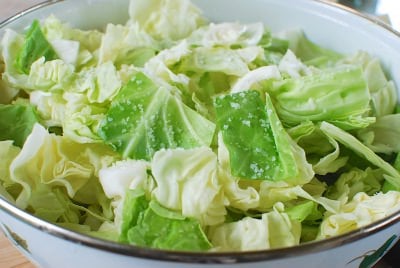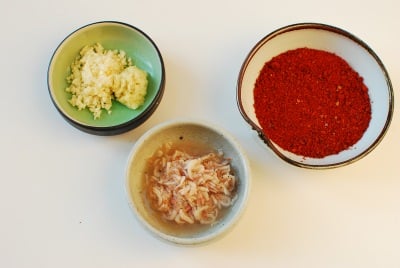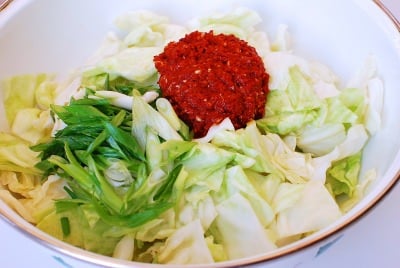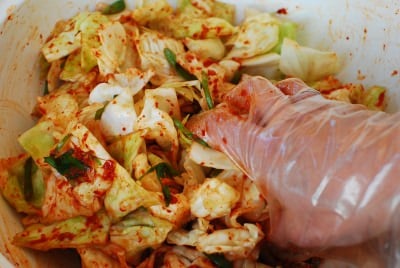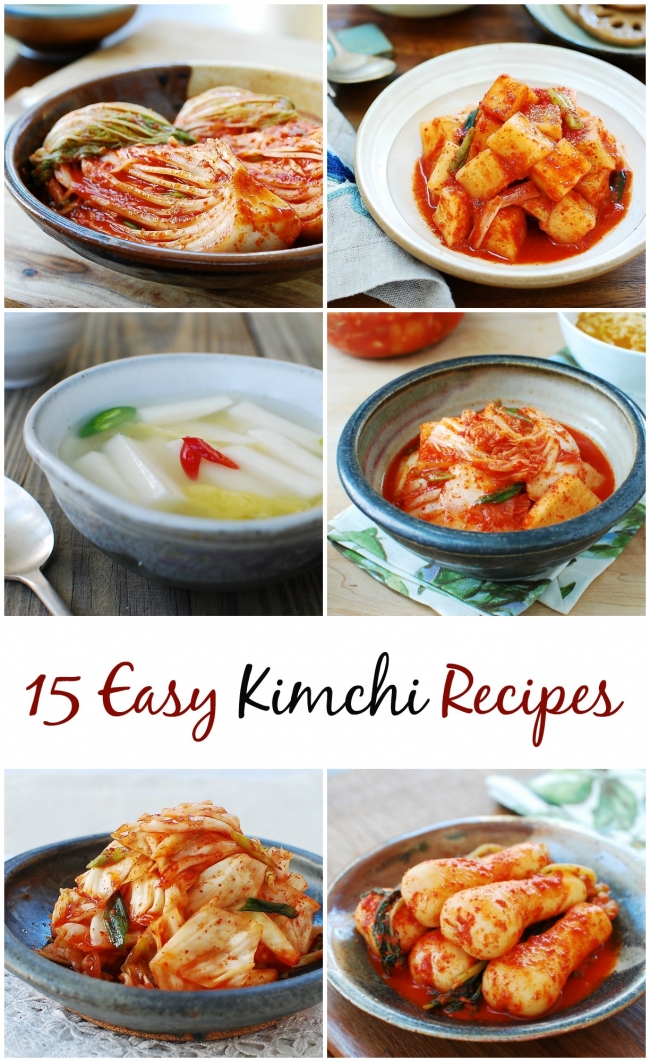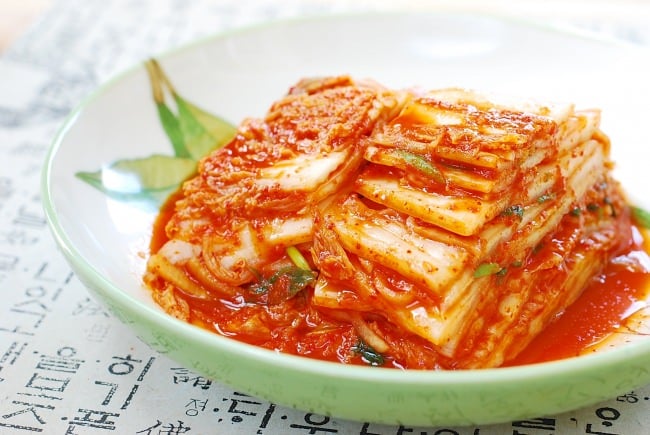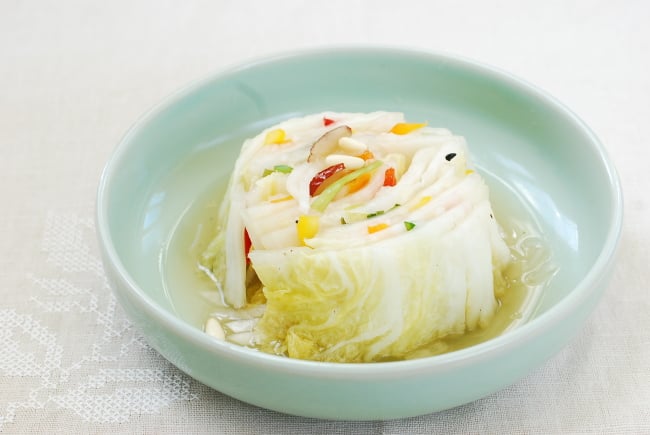![Ginseng chicken soup recipe]()
This boiling hot ginseng chicken soup, called samgyetang (삼계탕), is an iconic summer dish in Korea. Sam (삼) refers to ginseng (insam, 인삼), gye (계) means chicken, and tang (탕) is soup. It’s extremely popular as a nourishing food which helps fight the summer heat. As the Korean saying goes, eating the hot soup is “fighting the heat with heat.”
On sambok (삼복) days, it’s a Korean tradition to eat foods that are healthy and restorative. Samgyetang is a popular choice. Sambok days are 3 distinct days that mark the hottest summer period. Based on the lunar calendar, they are chobok (초복, beginning), jungbok (중복, middle) and malbok (말복, end). Tomorrow is malbok, which means the summer is winding down!
Hope you get to enjoy samgyetang before the summer goes by. But, don’t worry about it even if you don’t get to, this ginseng soup is a nutritious, comfort food which you can enjoy all year around!
In this post, I’m updating my samgyetang recipe which was originally posted in August 2014 with new photos, answers to frequently asked questions and minor changes to the recipe. Here’s everything you need to know about Korean ginseng chicken soup!
![Ginseng chicken soup recipe]()
Ginseng for samgyetang
Ginseng is highly prized for its medicinal benefits, including boosting energy and the immune system.
If you can’t find ginseng, you can omit the ginseng from this recipe and still make a tasty chicken soup, although, without ginseng, it can’t be called ginseng soup. When I don’t have ginseng, I make another type of chicken soup called dak gomtang (닭곰탕).
Korean markets around here sell fresh ginseng in the summer for samgyetang. I usually buy a pack and freeze the leftovers. You can also use dried ginseng roots after soaking in the water to soften.
Garlic, ginger, and jujubes (daechu, 대추) are other common ingredients. Jujubes are quite sweet, so do not use too many of them. Sometimes, other medicinal herbs such as milk vetch roots (hwanggi, 황기) are added as well as chestnuts and ginkgo nuts.
For the convenience, you can find samgyetang kits in Korean markets. They usually contain dried ginseng, jujubes, dried chestnuts, sweet rice, etc. If you choose to use a kit, follow the package instructions to prepare the ingredients (such as soaking) before using.
How to stuff the chicken
Samgyetang is made with a small, young chicken (known as Cornish hen in America) for its tender and tasty meat. If you can’t find a Cornish hen, use the smallest chicken you can find, adjusting cooking time. If you need to feed more people, it’s better to cook two small chickens in a larger pot rather than one large one. It takes much longer to cook the inside if the chicken is big, which will cause the outside to be overcooked.
The chicken is stuffed with soaked sweet rice (aka glutinous rice), chapssal (찹쌀). Some people stuff the chicken with ginseng, jujubes, etc., along with the rice, but I boil them in the broth to draw out the maximum flavors. Be sure to leave enough room in the cavity for the rice to expand in volume as it cooks.
![Samgyetang recipe 2]()
How to make the soup more flavorful
In Korea, the restaurants specializing samgyetang are very popular. Some are also highly sought-after by tourists. Those restaurants usually feature a deeply flavored, thickened soup. They use all sorts of medicinal herbs and aromatic vegetables, and start with well-prepared chicken stock to boil the chicken.
At home, we don’t generally go that far. But, if you like a deeper flavor, start with good quality chicken stock (commercially prepared or homemade). I sometimes make chicken stock with the roast or boiled chicken remains and use it as a base for samgyetang.
To make the soup slightly thick, soak more sweet rice than the amount called for the stuffing and then add to the water or chicken stock while boiling the chicken. It would be even better if you blend the rice with a little bit of water for a creamier texture. The starch of the sweet rice will thicken the soup slightly and give a bit of sweetness to the soup.
How to serve samgyetang
At restaurants, the whole chicken is served uncut as one serving, but it can easily be two servings. The soup is usually not seasoned while being cooked. It’s served with salt and pepper on the side, so each person can season the broth to taste and use the remainder to dip the meat in.
The ginseng flavored meat is tasty and tender, and the broth is rich and delicious. Also, the sticky rice stuffing that’s infused with the chicken and ginseng flavors is to die for. If you’re trying it for the first time, samgyetang will be nothing like any other chicken soup you’ve had before.
More chicken soup recipes
Dak Gomtang (Korean Chicken Soup)
Dak Kalguksu (Chicken Noodle Soup)
Chogyetang (Chilled Chicken Soup)
Dakgaejang (Spicy Chicken Soup with Scallions)
Slow Cooker Chicken Soup with Napa Cabbage
Pressure Cooker Nurungji Baeksuk (Boiled Chicken with Rice)
![Samgyetang (ginseng chicken soup)]()
![Ginseng chicken soup recipe]()
Samgyetang (Ginseng Chicken Soup)
![]()
A classic Korean chicken soup made with a small, whole chicken and ginseng.
- 1 cornish hen ((about 1.5 to 2 pounds))
- 1 fresh ginseng root (or dried ginseng, rehydrated)
- 3 tablespoons sweet rice (2 to 3 tablespoons more to boil with liquid if desired) (– soaked for 1 hour (yields about 4 tablespoons soaked))
- 5 – 6 plump garlic cloves
- 1 thin ginger slice ((about 1 inch))
- 2 to 3 jujubes, daechu (대추) ((dried red dates))
- 1 scallion white part
- 5 cups of water (or good quality chicken stock)
- 2 scallions (finely chopped, to garnish)
- salt and pepper to taste
-
Clean the chicken. Do not cut off the neck and/or tail, if they are still attached. They help keep the rice inside the cavity. Place the cleaned chicken on a cutting board or a large plate. Clean the inside of the cavity with a paper towel to remove any blood. Fold the attached neck into the cavity to close the hole.
![]()
- Stuff the cavity with the sweet rice and a couple of garlic cloves, leaving room (about 1/4 of the cavity) for the rice to expand as it cooks.
![]()
-
To keep the rice inside the cavity while being cooked, use of one of these two methods: (1) Make a small cut through the thick skin part between one thigh and the cavity opening, but not too close to the edge. Then, use your finger to expand the hole enough to fit the end part of a leg. Bring the other leg over, and insert the end part through the hole to keep the legs crossed together, tucking the tail in to close the opening (see the photos above); or (2) Simply cross the legs and tie together with kitchen twine. Tightly close the cavity with a toothpick if necessary.
![]()
-
In a medium size pot, place the chicken and add 4 to 5 cups (or enough to cover most of the chicken) of water or chicken stock. Add the garlic, ginger, jujubes, and ginseng. If the chicken came with the neck that’s been cut off, add to the pot. Also add the extra sweet rice to thicken the soup, if using. Blend the extra soaked rice with a little bit of water for a creamier texture, if desired.
![]()
-
Bring it to a boil over medium high heat. Skim off the foam on top. Cover, and boil for 10 to 15 minutes. Reduce the heat to medium low and boil, covered, for about 20 to 25 minutes, depending on the size of the chicken. See the note.
![]()
- Serve piping hot with the chopped scallions and salt and pepper on the side so each person can season to taste.
This recipe is an update of the original recipe posted in August 2014.
You can also use a samgyetang kit (commercially packaged dry ingredients for samgyetang). Follow the package instructions to prepare the dry ingredients to use in this recipe. Usually soaking is required.
The minimum cooking time is for a chicken about 1.5 pounds.
The post Samgyetang (Ginseng Chicken Soup) appeared first on Korean Bapsang.









 Save Recipe
Save Recipe